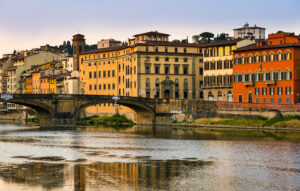While national home prices slide, the Tuscan capital emerges as one of Italy’s most resilient real estate markets, with several neighborhoods posting double-digit gains.
Florence stands apart from Italy’s broader real estate trends. As the national average for pre-owned residential properties declined 1.9% year-over-year to €1,815 per square meter, the Tuscan capital’s housing market continues its upward trajectory, cementing its position as one of the country’s most robust and dynamic property markets.
The city’s enduring appeal stems from a potent combination: unparalleled tourism draw, prestigious universities and cultural institutions, and an urban fabric that seamlessly blends Renaissance heritage with contemporary vitality. According to third-quarter 2025 data from Idealista comparing year-over-year prices, central and semi-central zones are experiencing particularly notable appreciation.
Campo di Marte Leads the Surge
Campo di Marte tops the growth chart with a striking 22% increase, reaching €5,093 per square meter. The neighborhood’s appeal extends beyond its namesake stadium and abundant green spaces. Proximity to the historic center combined with superior livability has fueled consistent demand, making it a standout performer in Florence’s already heated market.
Close behind, Rifredi posted a 19% gain, with average prices settling at €4,263 per square meter. The district—home to major healthcare facilities and university infrastructure—is undergoing significant urban renewal. These redevelopment initiatives, coupled with more accessible pricing compared to the city center, are attracting buyers seeking value without sacrificing connectivity.
The Center Holds Strong
Florence’s Centro Storico, the cultural and tourist epicenter, appreciated 18% to reach €6,063 per square meter. Properties in the most prestigious addresses remain among Italy’s costliest, yet demand persists unabated, particularly from Italian and international investors who view historic center real estate as both a lifestyle choice and a store of value. Select premium areas command even higher prices, reaching €6,366 per square meter with appreciation rates hitting 17%.
Emerging Neighborhoods Gain Traction
The Isolotto-Legnaia area, historically considered more peripheral, jumped 18% to average €3,746 per square meter. Improved transportation links to the center, enhanced services, and renewed interest from families seeking larger living spaces at relatively lower price points have transformed the district’s prospects.
Gavinana-Galluzzo recorded a 13% increase, averaging €4,194 per square meter. This residential quarter’s reputation for tranquility and quality of life is driving steady demand growth, positioning it as an attractive option for buyers priced out of more central locations.
Stabilization in Selected Areas
Not all neighborhoods are experiencing explosive growth. Some central areas are showing more modest appreciation of 10-12 percent, with prices ranging from 5,600 to 6,000 euros per square meter. High entry costs and limited inventory are holding back further increases in these already expensive areas.
Certain sections of Rifredi are also moderating, with 16-17% gains pushing prices to €3,600-€3,700 per square meter. This tempered growth reflects market maturity, where ongoing redevelopment and new construction are gradually consolidating values rather than driving dramatic spikes.
The Broader Context
Florence’s divergence from national trends underscores the city’s unique position in Italy’s real estate landscape. While much of the country grapples with declining property values, Florence benefits from structural advantages that continue attracting both domestic and international capital. The city’s housing market reflects a fundamental truth: in real estate, location and cultural capital remain paramount—and Florence possesses both in abundance.
For investors and homebuyers alike, the Tuscan capital represents a market where history, culture, and contemporary demand converge to create lasting value, even as broader economic headwinds impact property markets elsewhere across Italy.
Source: Qui Finanza



